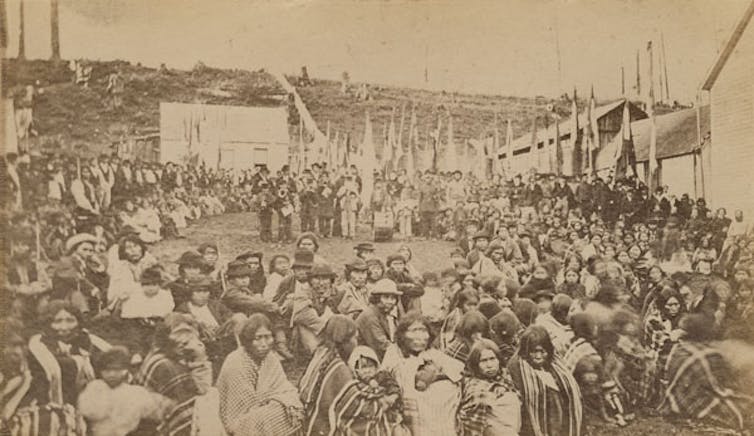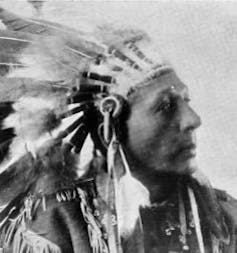[ad_1]
In recent years aboriginal peoples have seen land rights and sovereignty claims across Canada. After these events, many people learned and understood Canada’s work for Indigenous Peoples.
However, many don’t know that it was a very dark time in Canadian history. The “black” period in Aboriginal law in Canada was a time when the Canadian government barred lawyers from representing aboriginal peoples.
In 1927, the federal government inserted Section 141 into the Indian Constitution. The solicitation or collection of money in pursuit of a legal claim on behalf of any citizen or group without the permission of the Indian Department was prohibited.
As former Prime Minister John Diefenbaker explained, the arrangement “provides[d] Indians could not enter the courts without the minister’s permission to go. The depression lasted for about 25 years until 1951, when section 141 was repealed.
While Section 141’s racist and negative nature is well known, the specific effects of the ban have not been studied. We must continue to shine a light on this dark period in Canada’s legal history, including the process for Indigenous Peoples and the development of Indigenous human rights.
Denial of civil rights
Indigenous discourses of governance in Canada are not new. In fact, the ban on legal counsel was a response to the constitutional movement of civil society groups that gained momentum in the 1920s.
Organizations such as the Allied Indian Tribes of British Columbia, the Nisga’a Land Committee, the Six Nations Confederation and the Indian League of Canada all use the legal system as part of their political strategy. That includes hiring lawyers to take their claims to the land and enforce their sovereignty.
Section 141 was added to the Potlatch tradition which prohibits and prohibits group gatherings including rituals and dances. A set of tools designed to manage Indigenous Peoples.

(Library and Archives Canada)
First approved in 1884, they were the first to do so. But in 1914, the government became concerned with indigenous people’s claims of control over their access to land for settlement and commercial development.
In the 1920s, the police and Indian police carried out arrests, prosecutions and imprisonment. This hampered the ability of groups to hold meetings in support of land claims. At the same time, lynching laws were expanded to the point where Indian officials could prosecute natives for all events, not just traditional ones.
Citizenship legal challenges
According to political science professor Paul Tennant, the legal mobilization of Aboriginal groups has now reached a point where it will be a major disappointment for the federal government. The Department of Indian Affairs saw indigenous people’s claims of control as a threat to the administration of colonial rule and the goals of colonialism.

(Wikimedia)
At the international level, the Canadian government was embarrassed by the legal threat of the Six Nations led by Chief Deskeheh. Six Nations hired lawyers in Canada and the US as part of its royalty campaign. Lawyers for the Six Nations appeared before House of Commons committees and filed a petition asking the Supreme Court of Canada to consider the question of aboriginal sovereignty.
After unsuccessful domestic efforts, the Six Nations petitioned the League of Nations in 1922 (unsuccessfully) to recognize Canada’s failure to comply with its previous treaty agreements.
Back in Canada, the Nisga’a Land Committee and the Warrior tribes of British Columbia are agitating for land claims. In 1926, the Aboriginal peoples asked Parliament to submit a claim to the Privy Council for Aboriginal title for the entire province of British Columbia.
The government will set up a Special Committee of the Senate and the House of Representatives to investigate their claim. During the hearings, lawyers for Aboriginal claimants argued for Aboriginal title on a legal basis, but the committee ignored those arguments. Instead, his findings show the government is frustrated with indigenous people’s use of the legal system.
In addition to considering the proposal, the committee found that the Allies were being mobilized, and that the government’s time was being wasted on “unnecessary matters.” It was recommended that all land claims of indigenous peoples be abolished.
Shortly after the committee’s submission, Parliament added Section 141 to the Indian Constitution. When the amendment was introduced, then-interior minister Charles Stewart said the aim was to prevent lawyers from taking advantage of civil society groups by charging them high fees for cases they could not afford. victory: “We think it is beneficial for Indians. these contracts are monitored by the agency to protect them from abuse”.
However, this is clearly not a major concern. Section 141 was introduced to limit the ability of indigenous peoples to work in the legal system. If the intention was to prevent outsiders from taking advantage, it would have applied to people who were not “Indians.” Instead, it applies to “all people” Indian and non-Indian.
The intent of Section 141 was clear: “It is a bar to all land claims.”
[ad_2]
Source link
